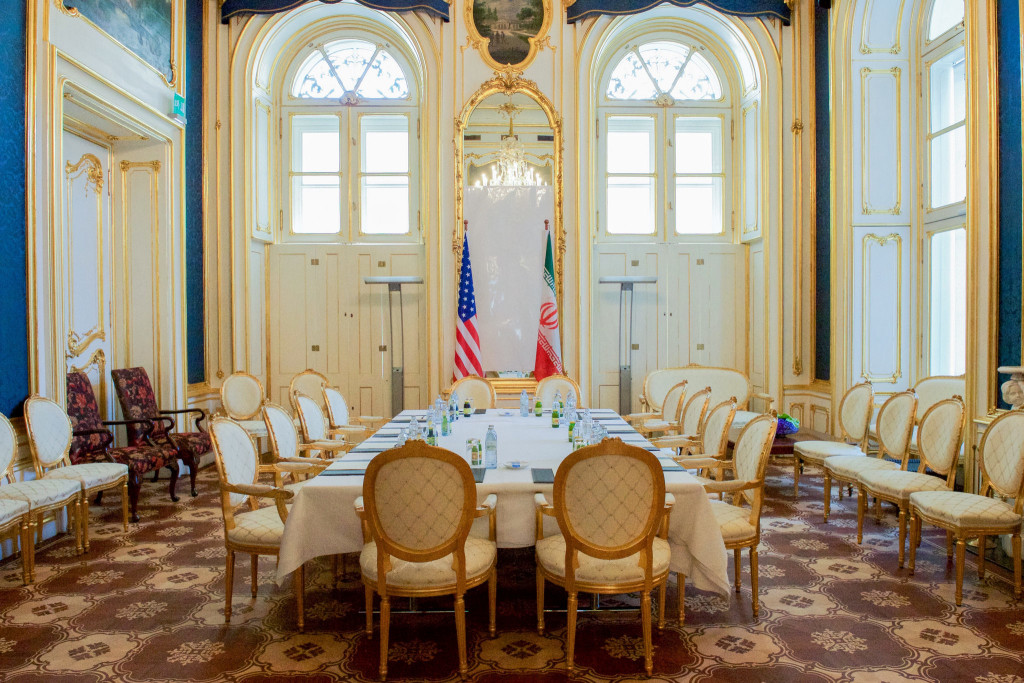History’s Real Lessons on the Iran Deal

Opponents of the Iran nuclear deal see many virtues and no significant risks in congressional disapproval of the agreement. And they often advance their views with historical arguments. Unfortunately for them and the larger debate on the Iran deal, their reading of history is flawed.
If Congress misses the opportunity to help secure America’s interests abroad, it would not be the first time. The Senate, for example, rejected the Versailles Treaty ending World War I. Whatever the treaty’s flaws, that decision locked America out of the League of Nations, and out of efforts to prevent the rise of Nazism in Germany. In 1999, congressional defeat of the Comprehensive Test Ban Treaty makes it harder for America to challenge nuclear proliferation. And today concerns remain in some quarters about the UN Convention on the Law of the Sea (UNCLOS), rejected in 1960 but championed anew by recent administrations. Unless, and until, we ratify UNCLOS, America has no legal standing to challenge China’s maritime expansion.
The consequences of congressional disapproval of the Joint Comprehensive Plan of Action (JCPOA), as the Iran deal is called, are more serious and immediate. Iran would feel free to disregard its commitments to current or future international inspections, as well as the restraints incorporated in the pending deal. U.S. officials say Iran could have a nuclear weapon in months, not years.
International sanctions will collapse. Already European businessmen are rushing to Tehran to take advantage of the new opportunities allowed by the agreement. To prevent an Iranian bomb would then require military action ― and not just the elusive “surgical strikes” touted by armchair generals, but war, a big war.
Frederick Kagan, writing in the Washington Post, wants us to believe that rejection of the Iran agreement would not lead to war. His justification? The failure to ratify the second Strategic Arms Limitation Treaty (SALT II) did not lead to war. Unfortunately, Kagan does violence to the history he calls upon us to learn from.
Kagan claims that “the Senate refused to ratify SALT II, ending the SALT process.” In truth, the Senate never voted on the treaty, which was intended to put tight caps on American and Soviet missiles and bombers, though the Foreign Relations Committee had voted in favor of ratification. After the Soviet invasion of Afghanistan, President Jimmy Carter asked the Senate leaders to set the treaty aside. It remained on the Senate’s Executive Calendar until 2000, when it was returned to President Bill Clinton along with 17 other long-dormant treaties.
Nor did the SALT process “end” in 1980, despite the absence of formal ratification. President Ronald Reagan adopted what was called the “no undercut policy” of U.S. adherence to the SALT limits and then sought and signed additional agreements limiting nuclear weapons. These treaties were possible precisely because both sides had kept the treaty limits and built on the negotiating history.
Kagan also wrongly suggests that the SALT I agreements, signed by President Richard Nixon in 1972, “did not have the desired effect” because “the Soviet nuclear stockpile expanded dramatically in subsequent years.” In fact, both sides stuck to the agreed limits, but the agreement excluded the numbers of warheads on missiles, and the Soviet ability to arm missiles with multiple warheads gradually caught up to the United States.
Contrary to Kagan’s argument, the experience with SALT I and II provides useful analogies that support approval of the Iran nuclear deal rather than buttress those calling for its rejection.
The Nixon administration did not link SALT I ― which froze offensive weapons numbers for five years and banned nationwide anti-ballistic missile defenses ― to other objectionable Soviet behavior, such as its support for North Vietnam, which was then killing U.S. soldiers. Nor did Nixon refuse to cut a deal on nuclear weapons because of Soviet mistreatment of its Jewish citizens or of the captive nations of Eastern Europe. He wanted SALT judged on what it did do in the nuclear realm and nothing more.
Similarly, Carter and Reagan challenged Soviet behavior on separate, nuclear and nonnuclear paths. The Berlin wall came down after Reagan left office, after he had signed an agreement limited to nuclear weapons in Europe.
Diplomats also learned from the criticisms of earlier agreements. That’s why the JCPOA with Iran is over 100 pages in English, compared to only 17 for SALT II. Negotiators insisted on detailed language rather than informal assurances.
The SALT agreements basically ratified each side’s military plans but put limits on the capabilities most worrisome to the other side. The Iran nuclear deal appears to do the same. But in both cases, the agreements limited the breakout potential in case the parties were lying about their plans. The failure of formal ratification of SALT II did not lead to war because there were other alternatives, including the informal adherence that was adopted. Neither side tried to break out of the basic limits ― until 2002, when George W. Bush formally abrogated the 1972 Anti-Ballistic Missile treaty, as allowed under the treaty, in order to expand U.S. missile defenses.
Of course, Congress can say no to the Iran deal. But critics owe us an honest assessment of the risks of war if the deal is voted down. Instead, they pretend that somehow a “better deal” can be had from the collapse of international sanctions and the removal of restraints and international inspections — the things that prevent an Iranian bomb today.
Charles Stevenson teaches at the Nitze School of Advanced International Studies. Johns Hopkins University. He worked on arms control issues as a Senate staffer in the 1970s and 1980s.

